Holger Fromme is the man behind the German horn loudspeaker manufacturer Avantgarde Acoustic. Here he talks to Hifi Pig about what drove him to build these speakers and where he sees the role of innovation in loudspeaker design going forward.

HP: When did you conceive of the idea for Avantgarde Acoustic and what was your main motivation?
HF: Before my interest in hi-fi, my interest was in live music. While young people today play video games, my friends and I went to concerts. We were living in the countryside with not too much going on. But there were approximately 20 concert locations in the bigger cities 100 km nearby. So we went out as often as we could. We (a group of friends) rented buses to travel to the concerts of Pink Floyd, Genesis, Zappa etc. and most of the legendary Open Air Festivals of that time. Music was simply our thing!
We all were used to “big” sounding music from these live concert experiences. So obviously we wanted to have the same “big” sound at home. Different to the young people today – who are raised with compressed sound played through miniature speakers – we wanted the “real” thing.
Around 1970 was as well the beginning of High-End in audio. There were no computers, no video games, no mobile phones and no internet. But instead people were interested in good equipment to reproduce music. So I grew up in the golden age of High-End. From the first money I earned as a worker in an icecream factory (at minus 20 degrees Celsius!), I purchased a Rotel receiver and then slowly but steadily I added a Teac open reel tape deck, a Thorens turntable and some big Infinity speakers. This was my first Hifi system.
My first encounter with horn speakers was at live rock concerts. At that time the bands normally used big horns systems. I especially remember a concert of Andreas Vollenweider the Rosengarten in Mannheim. He was playing his electrically amplified harp through two big white Electrovoice midrange horns, which were hanging above the stage. The sound was so incredibly clear and dynamic. Just two horns to fill a big concert hall with music. It was just fantastic!
Then, sometime later I visited a Hifi shop in Mannheim. There were two strange looking speakers standing in the corner of the room. They had a big wooden front panel and a relatively small speaker grill on the top. I had never seen these speakers before and asked the shop owner. He explained that these are “Klipschhorns”, which use the corner of the room as part of their horn curve. I got curious and he played the Klipschhorns for me: “Money” from the “Dark Side of the Moon” LP of Pink Floyd. He cranked up the volume and I heard this song like I have never heard before from a hifi system! I was simply totally blown away. It was incredible and so real, like being at the concert.
HP: The ideas of horns for musical reproduction in the home is not a new one, and by some is perhaps seen as an outdated technology, how would you counter this argument and how do you perceive horns as being a better way of getting listeners closer to the music?
HF: Our horn speakers are based on the physics of mother nature. They embrace the same principles that govern the functions of the human ear. The funnel shaped opening of the horn amplifies even the most minuscule deviations in sound pressure.
To better understand, one has to closer look at the basic function of a speaker. A speaker has to convert an electrical music signal into acoustical sound waves. Regardless whether it is a dynamic, an electrostatic, a magnetostatic or a horn speaker design, in every speaker a membrane has to move backwards and forwards with the pulse of the music. The more heavy the membrane, the more the inertia of this moving mass will oppose the movement. Or in other words: the more heavy the membrane, the more the details in music will be lost!
So every speaker designer in the world tries to minimize the moving mass of the driver. A logical trick would be to just make the driver/membrane smaller. This way the moving mass could be easily reduced. But unfortunately, by decreasing the size of the driver, the output would decrease as well. So, the smaller driver would have to make bigger excursions to reproduce the same impulse, e.g. make longer strokes. And as the membrane has to travel longer distances, it needs a longer time to do so. Or in other words: the longer the excursion the membrane has to stroke, the more time passes and the more the details in music will be lost!
For the speaker designer this is like spinning in circles. Either the membranes are too big and heavy, or they are too small and thus too slow! A horn is the unique solution to overcome this supposed irresolvable situation. With a horn you can increase the acoustical output, reduce the size and decrease the required excursions of any membrane to an absolute minimum. All at the same time, just by simply installing a horn in front of the membrane!
The magnitude of this functionality of a horn can be easily shown in the laboratory with an impulse response measurement. Just take any driver and measure its impulse step response at 1 Watt. At this power an average driver will have around 86 dB sound pressure level and the oscilloscope will show how the driver will move forward with lag and slowly comes back to a deferred stop. Now take a horn, install it in front of the very same driver and repeat the measurement at 1 watt. Unexpectedly the oscilloscope will show more or less the same curve as before. Even with a horn, the driver will move forward with lag and slowly come back to a deferred stop. So what is the advantage of using a horn?!?!? The difference is in the acoustical output of the horn loaded driver. With a horn, the driver will have an acoustical output of approx. 100 dB. This is practically the same output, as 25 drivers without a horn! So it is obvious that the measurement of the impulse step response at a given power of 1 Watt does not make any sense. It is like comparing apples and oranges. Correctly the measurement has to be done at a given acoustical output. So, if you now repeat the measurement with the horn loaded driver at 0,04 Watt, you will get exactly the same 86 dB as the driver without a horn at 1 Watt. And now take a look at the oscilloscope! At 0,04 Watt the driver is hardly doing any excursion! So on the time axis it reproduces the peak more accurately with significantly less lag. And as the excursion is so much reduced, the driver comes back to standstill much faster. The performance of the driver loaded with a horn is worlds apart.
A horn is the most natural and powerful way to amplify sound waves. At a given output, speakers with horns have an up to 95% lighter membrane. Driver over excursion and the resulting distortion is avoided. In addition, for a given driver size, they have an up to 25-times higher acoustical output. As a result, the audio signature is livelier, as the membrane only has to execute a fraction of the movement. A horn is the most sophisticated form of any loudspeaker: minimal mass and motion – maximum power – increased fidelity – reduced distortion.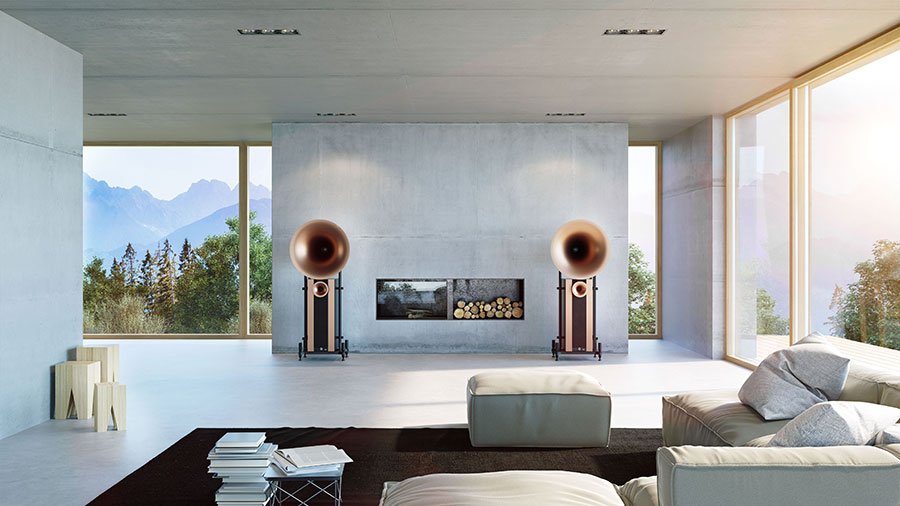
HP: You have not been afraid of embracing new technology and the introduction of your Zero Series of loudspeakers created a lot of interest when they were launched. Please explain to readers what the new technologies were.
HF: Life is getting faster, more stressful and more complex. Is it not time to settle down a bit? Back to the essential, the original and the real?
These are exactly the questions we asked ourselves when designing the ZERO 1. How can one reduce, in a nutshell, a multi-component audiophile audio system? How can you simplify the installation and the user interface? How can we integrate the system into state-of-the-art wireless players with the help of state-of-the-art digital technology? How do we manage, based on the acoustic parameters of the horn technology, to design a product that can easily be integrated into the living space? And last-but-not-least: how can we further improve the sound by integrating and intelligently linking all components?
We have found answers to these questions. Answers that are unusual. Answers that are elaborate. And always answers that we think are correct. The result was the ZERO 1. An extremely complex and high-tech product for us developers. But at the same time for you, the listener, a powerful plug & play audiophile system, as it has never been before in this condensed a format.
We believe that truly innovative products can provide answers to the needs of tomorrow’s people today. And we believe that high-quality music playback can make an important contribution to this. Just let go, enjoy the moment and let yourself be carried away to another world. Is not that what we all want here and there on the way to a return to the essential, the original and the real?
Connectivity is one of the keywords at the last couple of years. i.e. Modern devices must integrate seamlessly into our digital world. And we have rigorously transferred these basic principles and launched the first fully digital wireless horn system after 5 years of development. Connect to mains, connect to Wi-Fi and press PLAY in your smartphone. That’s all!
Compared to normal wireless speakers, the Zero 1 has three key advantages: First, a powerful 250 Hz spherical horn is installed, which reacts much more precisely to music signals. Second, a super-fast 66-bit FPGA processor calculates a smooth, flat frequency response with perfect phase response. And of course, there are six amplifiers with a total of 1,000 watts integrated, which are among the best there is today.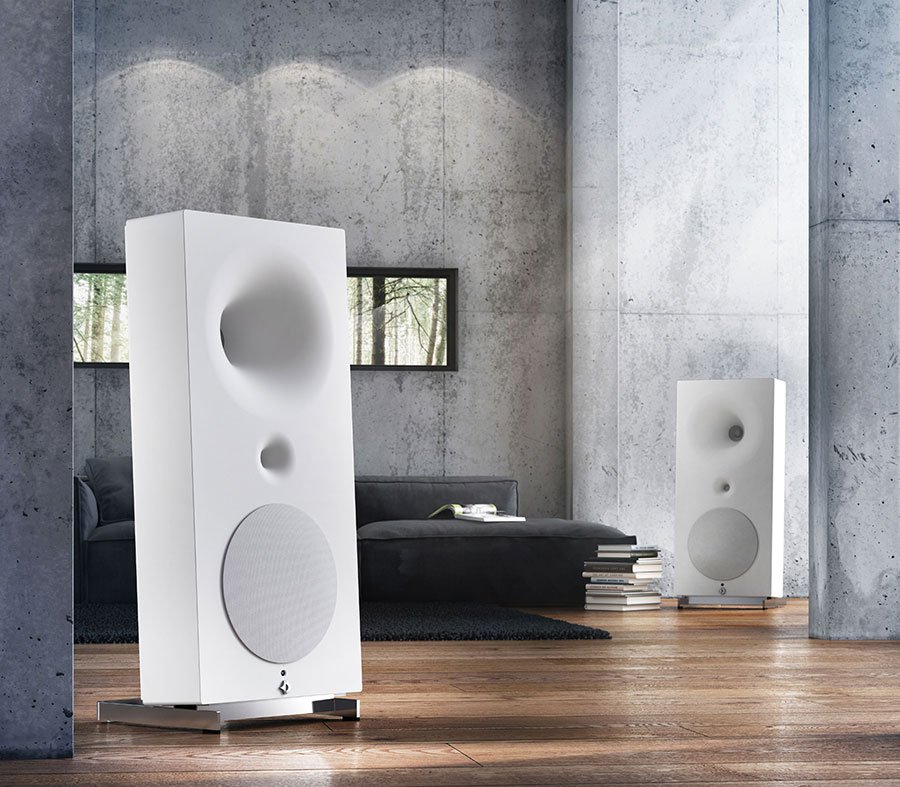
HP: How you feel new technologies helped bring high-end audio to a wider, and perhaps less audiophile market
HF: As I mentioned above, people want to simply their lives and not make it more complicated. High-End from the old days is very complicated. To get new customers interested we need products like the ZERO 1. This will help our industry to bring high quality sound to a wider market.
HP:How you have implemented what you learned with the Zero series into other loudspeakers you produce.
HF:The big thing we learned with the ZERO1 is its programmability. In our labs R&D can perfectly fine tune all parameters of our speakers to optimise the interaction of every component and to get the sound people expect from us.
But there is one variable we simply cannot determine up front – it´s the acoustics of the room the speaker will be operated in. If it´s a regular room – which acoustically behaves like the norm – everything may be fine. Our speakers are not designed for an anechoic chamber but are already configured in the factory to the acoustical parameters of a “typical“ listening room.
But what happens, if the room has unfavourable dimensions and/or is furnished in an unusual way? If you are lucky, it is ok. But maybe not. The acoustic of a room has a significant influence on the sound. Low frequencies have big wavelengths – for example at 70 Hz the sound wave has a length of nearly 5 meter (16 feet). These long wave fronts are being reflected by the walls. They bounce back, in some areas overlay with each other, in other zones negatively interfere and obliterate. As a result, in some areas certain frequencies are being reproduced too loud, in others too soft.
During the past years we have meticulously investigated on how to solve this problem. We are proud that we can now offer with the XD series of products a holistic concept to optimise the interaction of the speaker in the customer´s room.
At first we needed to create the technical prerequisites, to be able to manipulate the bass response of our speakers. To do this we incorporated complex digital processing power in all subwoofer systems of our new XD Series of speakers. Its 10 parametric equalizers allow us to set more than 100 million different frequency curves. Or to put it in simple words: everything is possible.
HP: Your most recent addition to the Avantgarde Acoustic family of loudspeakers is the XD range which includes active DSP in their design. How has this technology been received by “purist” audiophiles, many of whom see any kind of digital manipulation of the audio signal, despite it being used extensively in professional studios, as being incorrect in some way. How would you counter this more “traditional” thinking?
HF: Yes, in the old days the disadvantages of DSP technologies might have been a limiting factor. Today this is different. The DSPs available today are incredibly powerful. That´s why we believe that DSP technology is perfectly suited to align any speaker to the customers room. This is not so important for mid & high frequencies, but definitely is essential for low frequency integration. I am convinced that in some years to come, all speakers playing in our league will have digital processing incorporated in the bass frequencies.
HP: Do you perceive your loudspeakers as works of acoustic art or does form much follow function in a Bauhaus sense in your designs?
HF: Our design philosophy is very much a concept of “functional design”. So yes, I believe it has some sense of Bauhaus design.
HP: Your designs have won many awards outside the audio and high-fidelity arena, including awards The German Design Council. How important is it for you personally to receive such recognition for your work and your products?
HF: Yes, for sure for all of us these awards are a fantastic recognition of our work. But it is also our mission to bring the quest for high quality music reproduction to a wider range of people. And here the awards help a lot.
HP: We’ve experienced the Avantgarde Acoustic effect at many shows around the world and it is clear that you are not afraid of giving attendees something out of the ordinary. At Munich High-End 2017 you had the Trios and a full complement of six Bass Horns, which as well as playing more conventional recorded music also provided the sound system for renowned, and very energetic, drummer Olad Kafri. Where did you get this idea from and how do you think it was received?
HF: In actual fact I meet Oded Kafri performing in the streets of Berlin. He played on analogue drums and it was so amazing. So dynamic. That was when the idea was born. I bought a digital drum set and invited Oded.
The reaction was incredible.
Watch the video
HP: Whilst on the subject of Hifi shows, it’s not uncommon for the audience at an Avantgarde Acoustic presentation to applaud at the end of the demonstration, something rarely experienced. There is a clear and palpable feeling that people have really connected with the music being played and the experience as a whole. How important is it that people connect on an emotional level with the music and how do you feel your loudspeakers facilitate this kind of spontaneous response?
HF: We believe in people who celebrate and share the small moments in life. Who live conscious and take good time when they do something. People who treat other people with respect. Who care about sustainability and intrinsic values. And who like art & culture. And last but not least: who simply love music.
And there are many many people in the world who share this!!!! And apparently these people like the kind of uncompressed, direct and explosive sound of the Avantgarde´s. Avantgarde is an emotional sound. It´s fun.
HP: The market for your speakers could be seen as a little different from the ordinary given the size, design and price. You have also had press coverage in high-end architectural and lifestyle publications. Do you see the market for your kind of products as being something more than the audiophile market and do you see this as a vital move for the industry as a whole?
HF: We do not believe in a small isolated audiophile society who care about products only. We believe in high quality music. So yes, I believe this is a vital move of our industry.
HP: When relaxing at home what speakers, we’re assuming Avantgarde, do you use and what music do you enjoy?
HF. I am a lucky guy. I have a Trio system with 6 basshorns at home. So yes, I am a little bit spoiled :-)
My father is a big Jazz enthusiast and my mother an Opera lover. So when I was young I grew up at home with Classical Jazz music of the 1950-60s and with Italian Opera music. But Jazz music never really was my favourite kind of music. As I was born in 1956, my music “career” started with the Beatles, the Rolling Stones, the Who, Led Zeppelin, Frank Zappa etc. Since then my personal preferences have changed very much during the past years. Currently I very much enjoy Industrial Rock, Crossover, Trance and House music.
And beside these more contemporary music styles, there is simply nothing more relaxing and beautiful than listening to Classical music or Opera concert after work at home!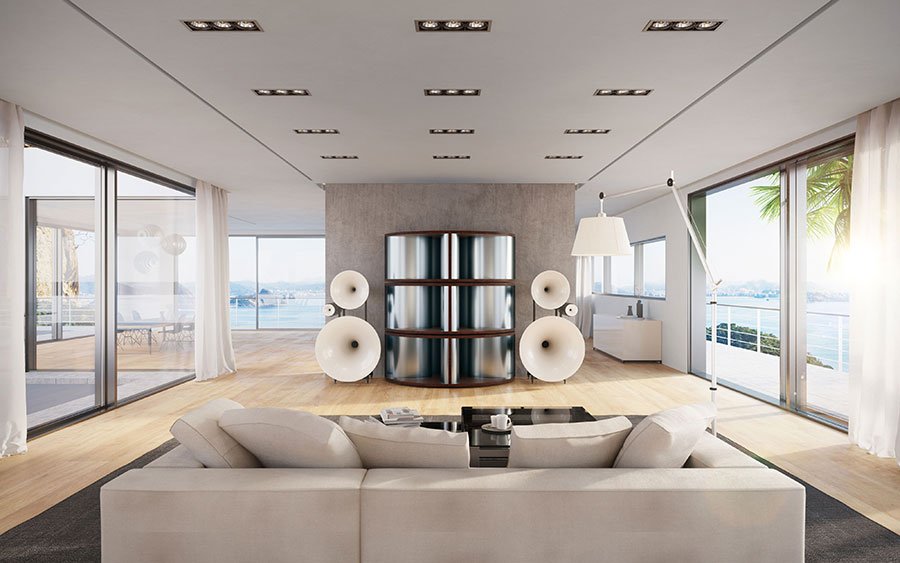
HP: Music in the home is changing with more and more people using smaller systems (Sonos etc) and streaming services. Where do you see high-end in the next ten years time?
HF: Bigger, nicely designed “horn” systems with streaming devices :-)
Copyright Hifi Pig
No part of this interview may be published in part or in full without the prior consent of the editor of Hifi Pig





















































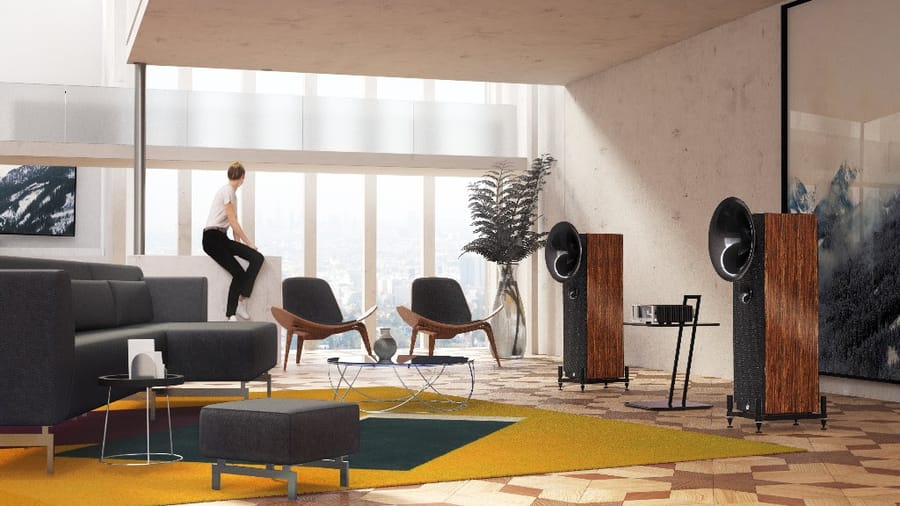
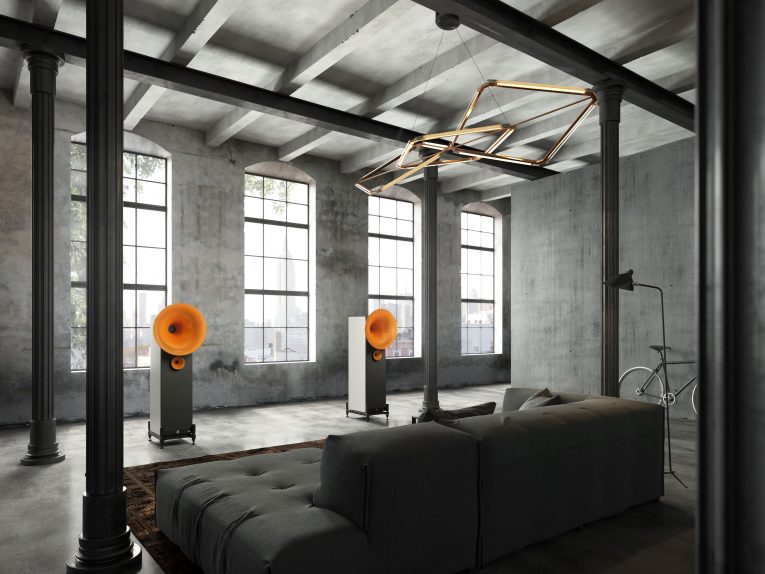

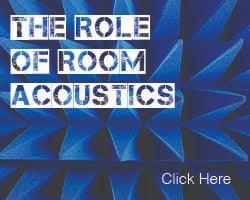



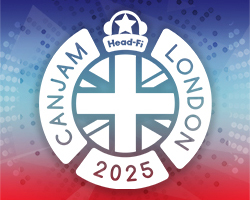










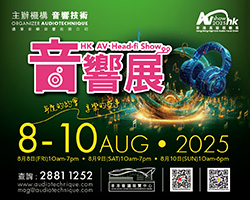


































































































































You must be logged in to leave a reply.